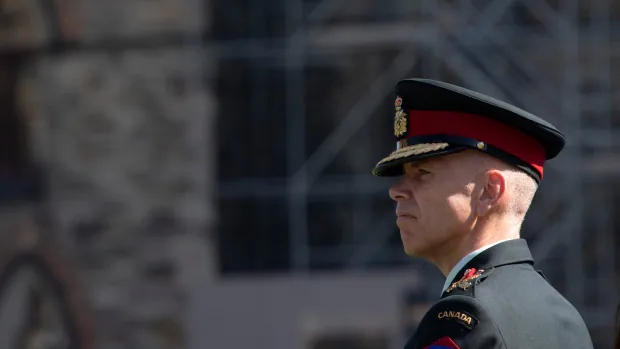Chief of Defence Staff Gen. Wayne Eyre says that while Russia’s naked aggression in Ukraine has given NATO new energy, he’s concerned about the Canadian Armed Forces’ state of readiness if Canada is ever drawn into a wider conflict.
“That is one of the things that keeps me awake at night,” Eyre said Thursday. “As we re-constitute the Force for the future, the future is here now. So how do we ensure we’re ready to fight tonight?”
Speaking at a defence conference in Ottawa on Thursday, Eyre said, “the world is getting more dangerous every day and we need to be ready for it and our people need to be ready for it.”
It’s been a difficult few years for the Forces and the pandemic pushed the institution “to the limits,” he said.
‘More change is on the way’
COVID-19 has exhausted members and recruitment is down. So is entry-level training, which has affected the military’s readiness to respond, said Eyre. He said the military is working to fill those gaps and rebuild the force.
“The pandemic has challenged all of us as individuals and an institution,” he said. “We can’t carry on like that because more change is on the way. We have to become rapidly ready for that increasingly dangerous future.”
Eyre said the military is overhauling its culture to retain talent amid a sexual misconduct crisis involving a series of senior leaders. The Canadian Armed Forces also needs to speed up recruitment, modernize its equipment and boost training to make sure it can sustain its contribution to NATO.
Canada has committed 120 troops to Eastern Europe
More than 500 Canadian troops are in Latvia and Canada has committed to sending to Eastern Europe an artillery battery of 120 troops, along with another frigate and an air force maritime surveillance plane. Canada has placed another 3,400 additional soldiers, sailors and aircrew on standby in case NATO calls on Ottawa for more help.
WATCH | Trudeau extends Canada’s commitment to NATO mission in Latvia:
Prime Minister Justin Trudeau says Canada will extend the deployment of hundreds of Canadian soldiers in eastern Europe indefinitely to prevent further Russian aggression. 2:02
Defence Minister Anita Anand has said the country has the capacity to send those 3,400 military members, even with a diminished force of about 65,000 regular members and 30,000 reservists. But the government has faced questions about whether it can sustain that level of deployment.
Eyre said the military options that he brings forward to the defence minister is based on “what we can realistically generate and put together to have a credible contribution to the alliance.”
“But this speaks to why we need to accelerate many of the things that I talked about: getting more people in, getting the projects that we have on the books through the various gateways and into the hands of our people,” he said. “There’s no single silver bullet for readiness.”
Before the pandemic hit, the defence department estimated that roughly 80 per cent of the military could meet its operational obligations if called upon. New figures on the military’s state of readiness have not been published.
Defence chief says guarding Canada’s Far North a main priority
Eyre told the conference that another of his key concerns is protecting Canada’s Far North.
While the risk of a Russian incursion into Canada’s Arctic is very low at the moment, Moscow has invested greatly in its Arctic footprint in recent years.
“Take a look at what Russia has done,” Eyre said. “They have re-occupied formally abandoned Cold War bases.”

Eyre said Russia also has instituted its own defence strategy to prevent adversaries from occupying its northern territory by land, sea or air — a strategy based on what China has done in the South China Sea.
“So they have already gone there,” he said. “What lessons can we learn about what capabilities they have put in the North?”
The population density and infrastructure in Canada’s Arctic is very low, Eyre said, and Canada needs to be able to project force there to act as a deterrence to Russian forces.


